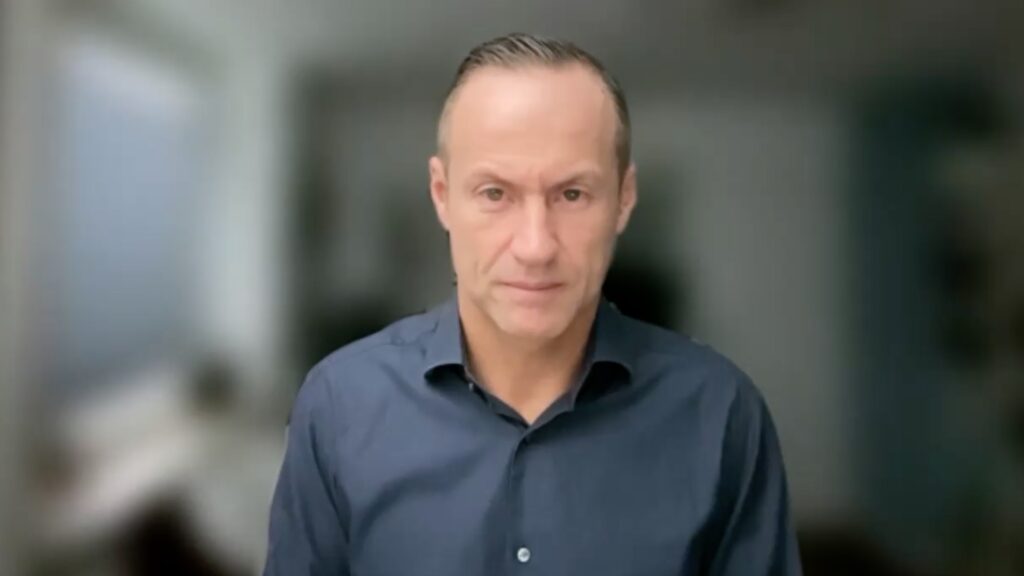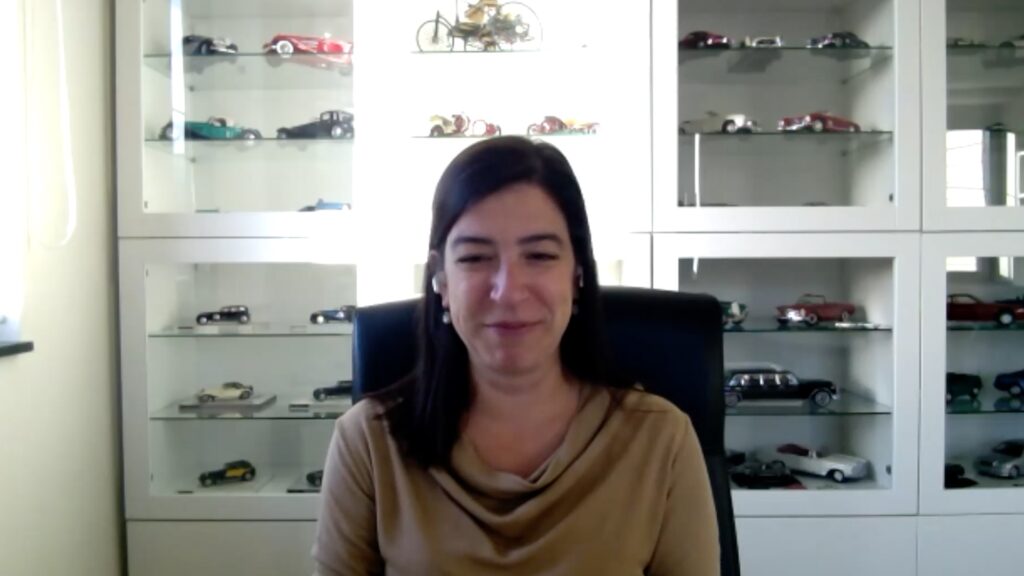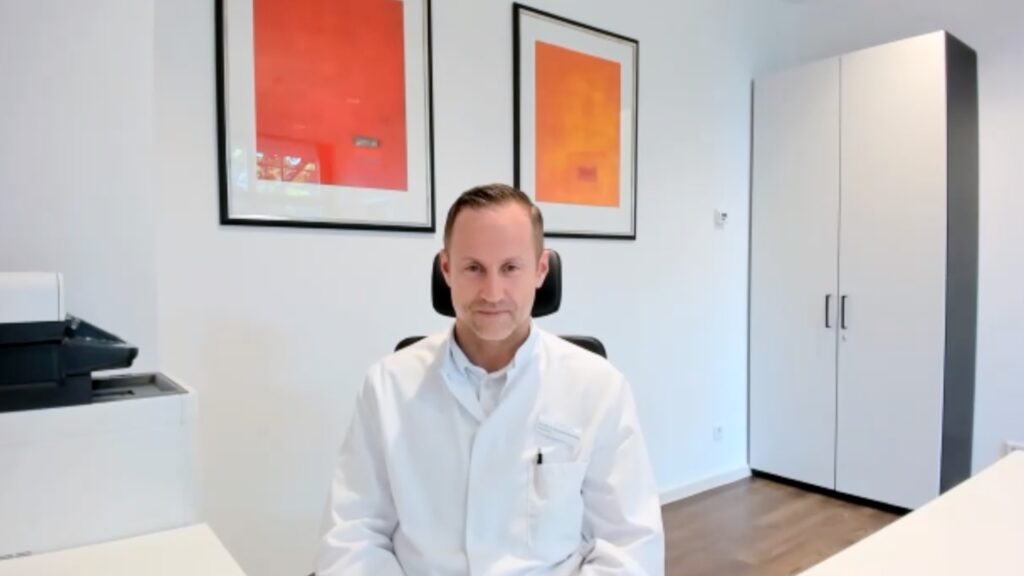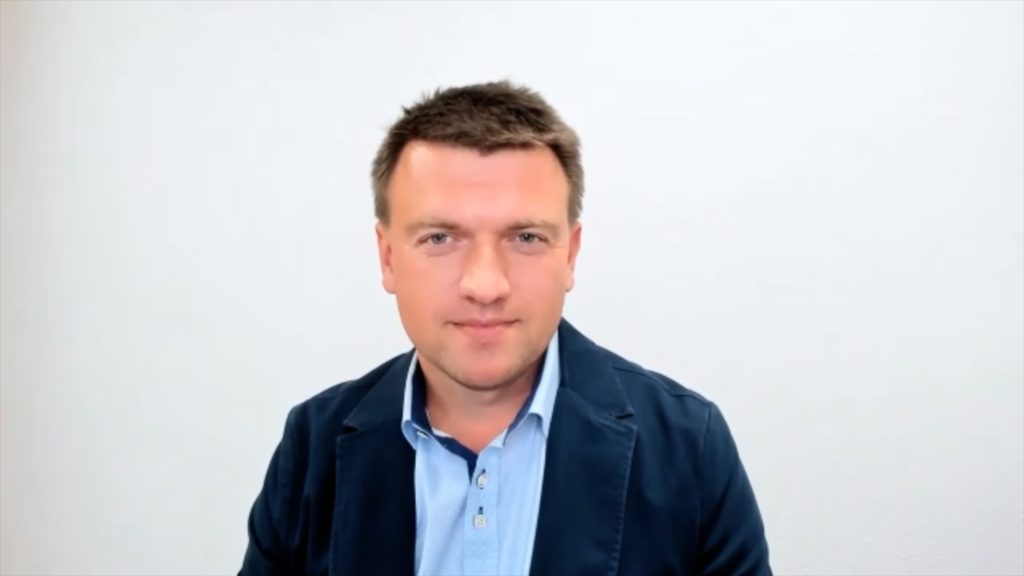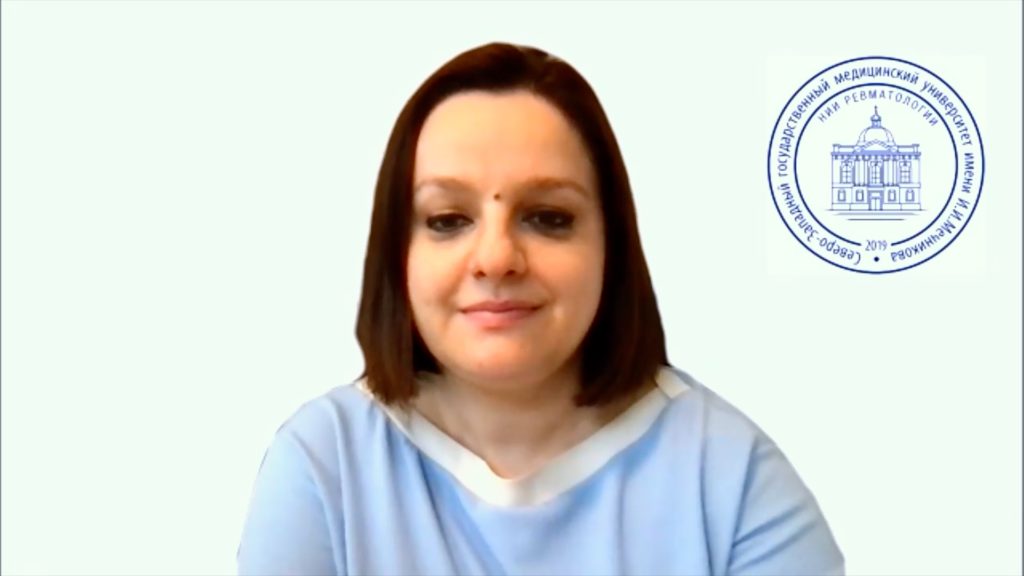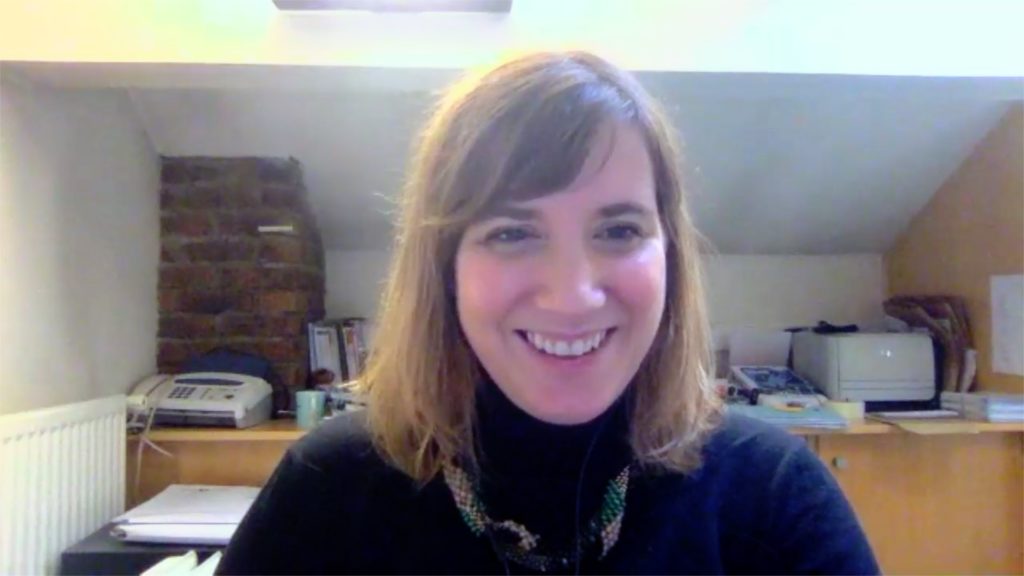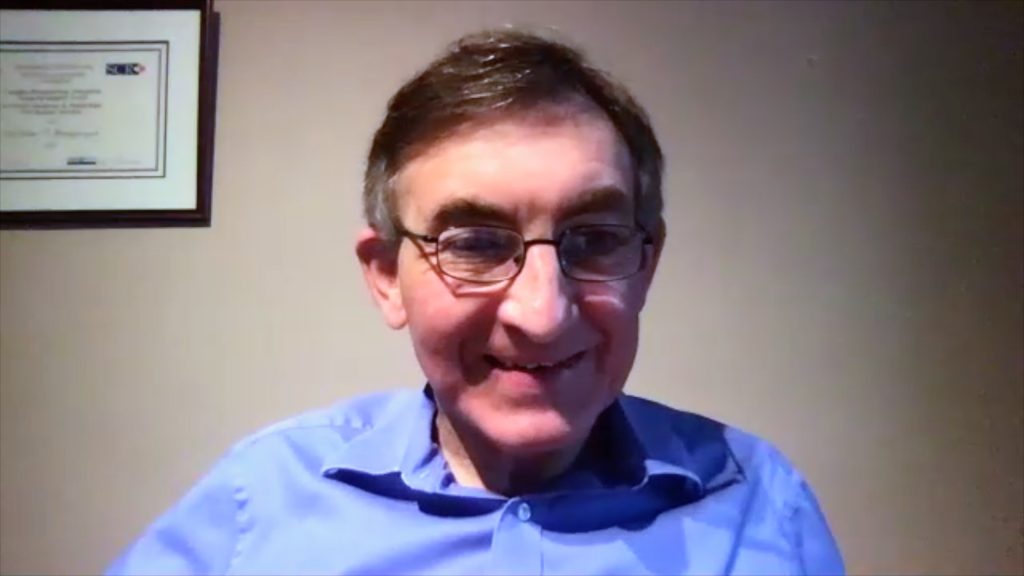touchIMMUNOLOGY coverage of data presented at EULAR 24:
As part of our late-breaking abstract coverage, we spoke with Prof. Denis Poddubnyy (Charité-Universitätsmedizin Berlin, Berlin, Germany) to discuss the key data presented at EULAR 2024 in the field of axial spondyloarthritis (SpA).
We begin with the results from the open-label extension of the phase 3 BE MOBILE 2 study (NCT04436640), which evaluated the impact of bimekizumab on 2-year radiographic progression in the spine of patients with radiographic axial SpA. As a dual inhibitor of IL-17A and IL-17B, it was hypothesized, based on preclinical data, that bimekizumab could have a stronger inhibitory effect on bone formation compared to treatments blocking IL-17A alone. Before discussing the results, we further explore this rationale and the importance of addressing structural damage in patients with axial SpA. Summarizing the results and considering any study limitations, we then compare these findings to those observed with other treatments (such as ixekizumab, upadacitinib, secukinumab, and certolizumab pegol) and discuss what these results could mean for clinical practice.
We then delve into the results from a recent study by Berg et al designed to answer the important question of whether remote monitoring or patient-triggered monitoring is at least as good as regular face-to-face consultations. Discussing the authors’ findings, we put the results in the context of how they could impact day-to-day practice, patient outcomes and healthcare resources overall.
A discussion of the results from another late-breaking abstract evaluating the efficacy of using the IL-17 inhibitor secukinumab as a first-line treatment compared to a standard of care approach (the AScalate trial; NCT03906136) can be found here.
Questions:
- Could you briefly describe the aim and outcomes of the BE MOBILE 2 study on structural damage progression over 2 years with bimekizumab? (0:12)
- What were the study results reported at EULAR 2024 on remote monitoring and patient-initiated care versus regular outpatient visits, and what lessons can be learned? (2:39)
Associated abstracts:
- Baraliakos X et al. Minimal Spinal Radiographic Progression in Patients with Radiographic Axial Spondyloarthritis Over 2 Years of Bimekizumab Treatment: Results From a Phase 3 Open-Label Extension Study. EULAR 2024. Abstract LBA0003
- Berg IJ et al. Remote monitoring and patient-initiated care compared to regular face-to-face outpatient visits in axial spondyloarthritis: Results from a randomised non-inferiority trial. EULAR 2024. Abstract LBA0004
Disclosures: Prof. Denis Poddubnyy discloses receiving grant/research support from AbbVie, Eli Lilly, Janssen, Novartis, Pfizer, and UCB; consulting fees from AbbVie, Biocad, Bristol-Myers Squibb, Eli Lilly, Janssen, Moonlake, Novartis, Pfizer, and UCB; and speaker fees from AbbVie, Canon, DKSH, Eli Lilly, Janssen, MSD, Medscape, Novartis, Peervoice, Pfizer, and UCB.
This content has been developed independently by Touch Medical Media for touchIMMUNOLOGY and is not affiliated with EULAR. Unapproved products or unapproved uses of approved products may be discussed by the faculty; these situations may reflect the approval status in one or more jurisdictions. No endorsement of unapproved products or unapproved uses is either made or implied by mention of these products or uses by Touch Medical Media or any sponsor. Views expressed are the speaker’s own and do not necessarily reflect the views of Touch Medical Media.
Transcript:
My name is Denis Poddubnyy. I’m a Professor of Rheumatology in Berlin at the Charité Hospital, as of today.
Structural damage progression in axial spondyloarthritis is a very important, outcome that is clearly related to functional outcomes in patients with axial SpA. In the BE MOBILE study, we looked for the first time into progression of structural damage in the spine in patients with axial spondyloarthritis treated with IL-17A plus IL-17F inhibitor. So, there was some preclinical data showing that, IL-17F blockade in addition to IL-17A might be associated with a better inhibition of osteoblastic activity, meaning there was some expectation that treatment with bimekizumab might be associated with a deeper suppression of structural damage, progression in axial SpA.
What we saw in this study, obviously, there was no control group here. So we can compare or we can interpret the data only in the historical context. So after two years, approximately 20 percent of the patients showed some structural damage progression, relevant progressions or development of new syndesmophytes was even lower. And, this compares pretty well to the data from recent studies with other drugs, including ixekizumab, upadacitinib, secukinumab and certolizumab pegol.
Practically, that means that we don’t see clear indicators that treatment with bimekizumab is associated with stronger suppression of structural damage progression. But at the same time, we do not see, also a higher progression rate. And that means that the current concept that inhibition structural damage progression in the spine and axial SpA is possible through continuous and deep suppression of inflammation is valid also with regards to this treatment option.
It was a very interesting study addressing a very important question, whether remote monitoring or patient-triggered monitoring, might be at least as good as regular face-to-face presentations. So overall, the authors found that there was indeed no significant difference between all three modalities, but at the same time, their utilization of resources was the lowest one, in the remote monitoring and was also low in patient-triggered monitoring as compared to regular visits.
I think this tells us that in a daily clinical practice, we indeed can rely on a hybrid concept and we can decide individually in our patients, whether monitoring is required really regularly or every three-to-six months, or whether it can be even a longer interval giving stable course of the disease. In this situation, we probably should not have major concerns that the outcome in those patients, who go into remote monitoring or the patient-triggered monitoring would be worse as compared to regular examinations.
Interviewer/Editor: Gina Furnival
Cite: Poddubnyy D. Bimekizumab on structural damage in r-axial SpA & Remote Monitoring vs. Face-to-Face. touchIMMUNOLOGY, July 25 2024.



